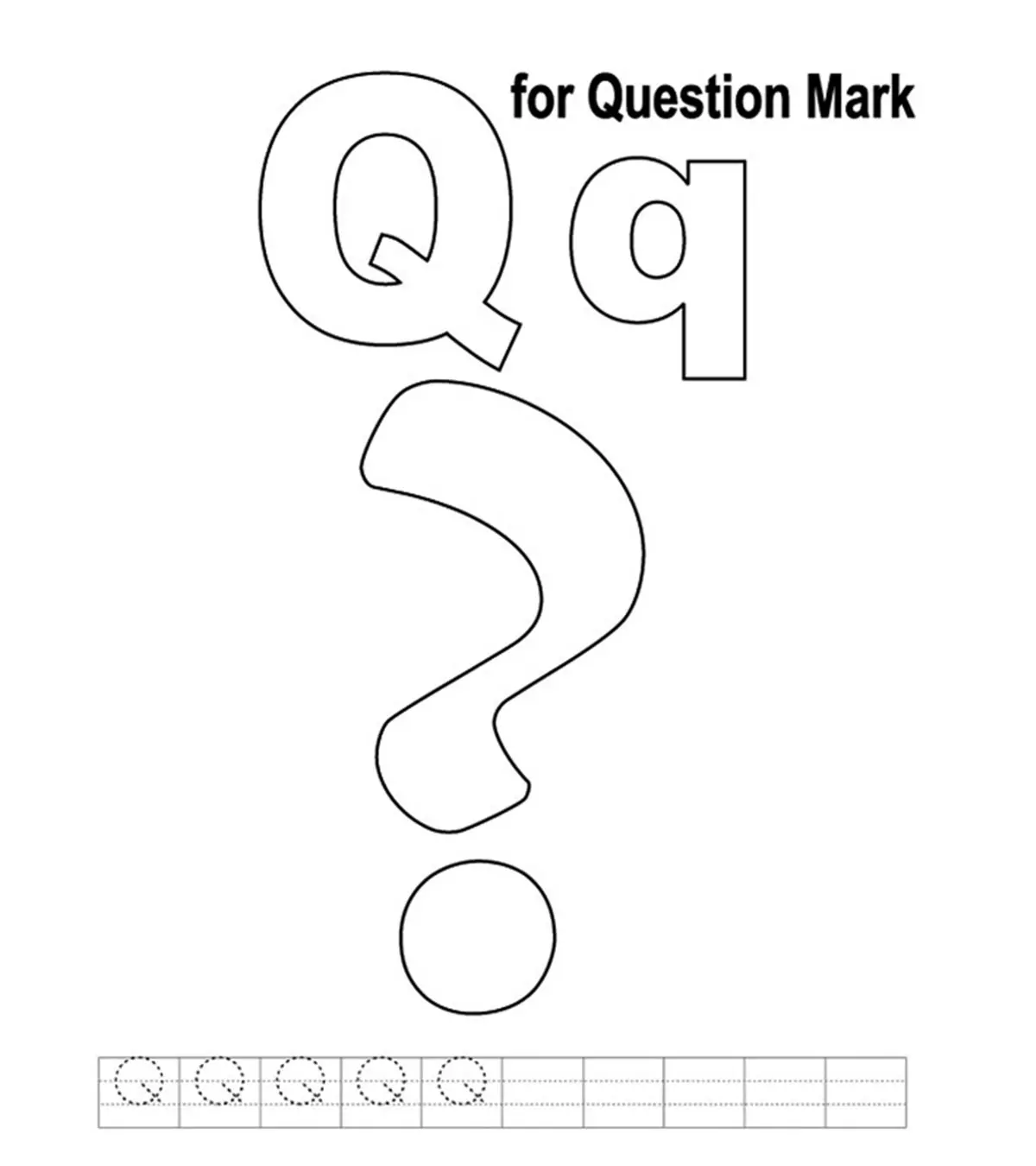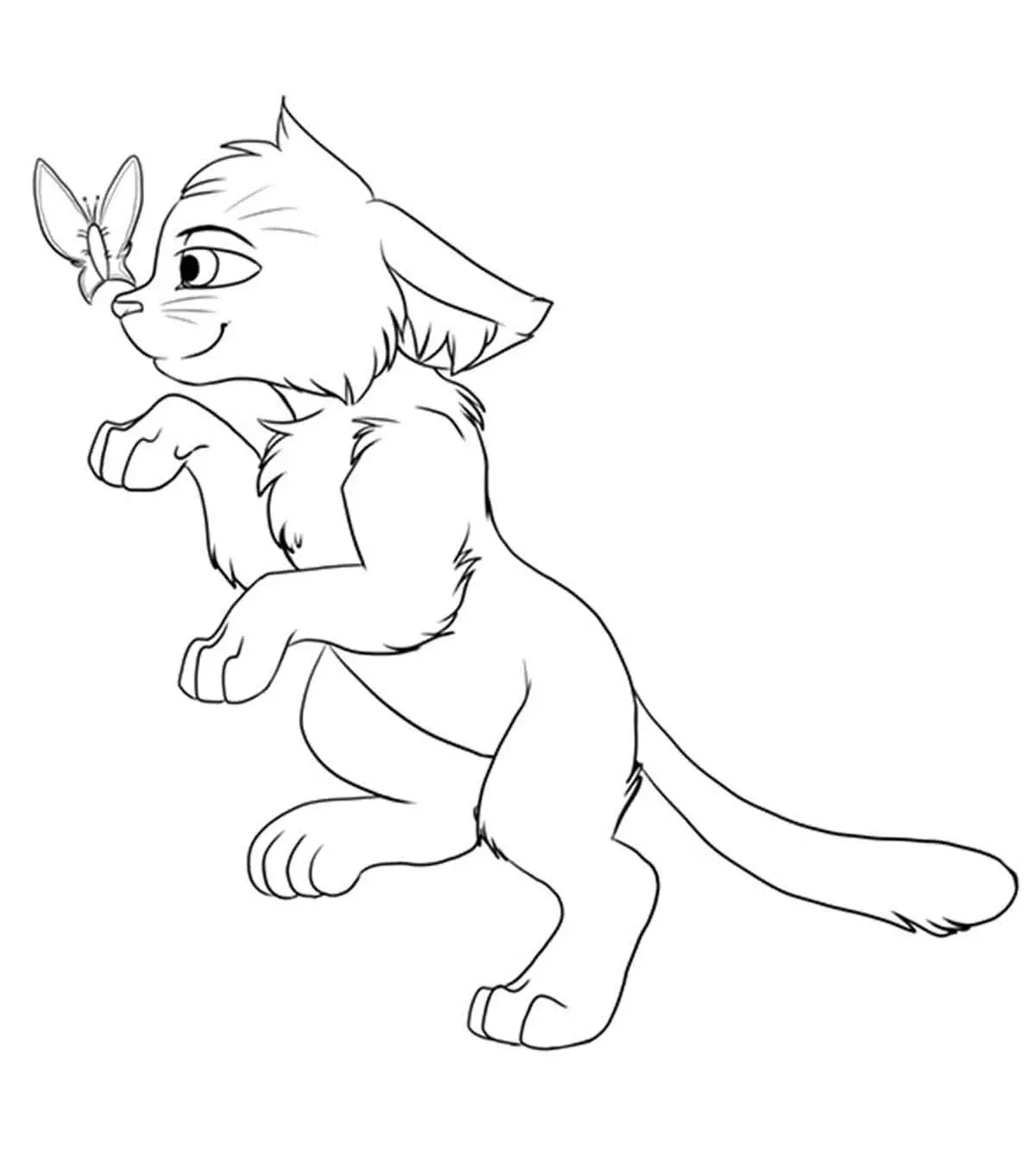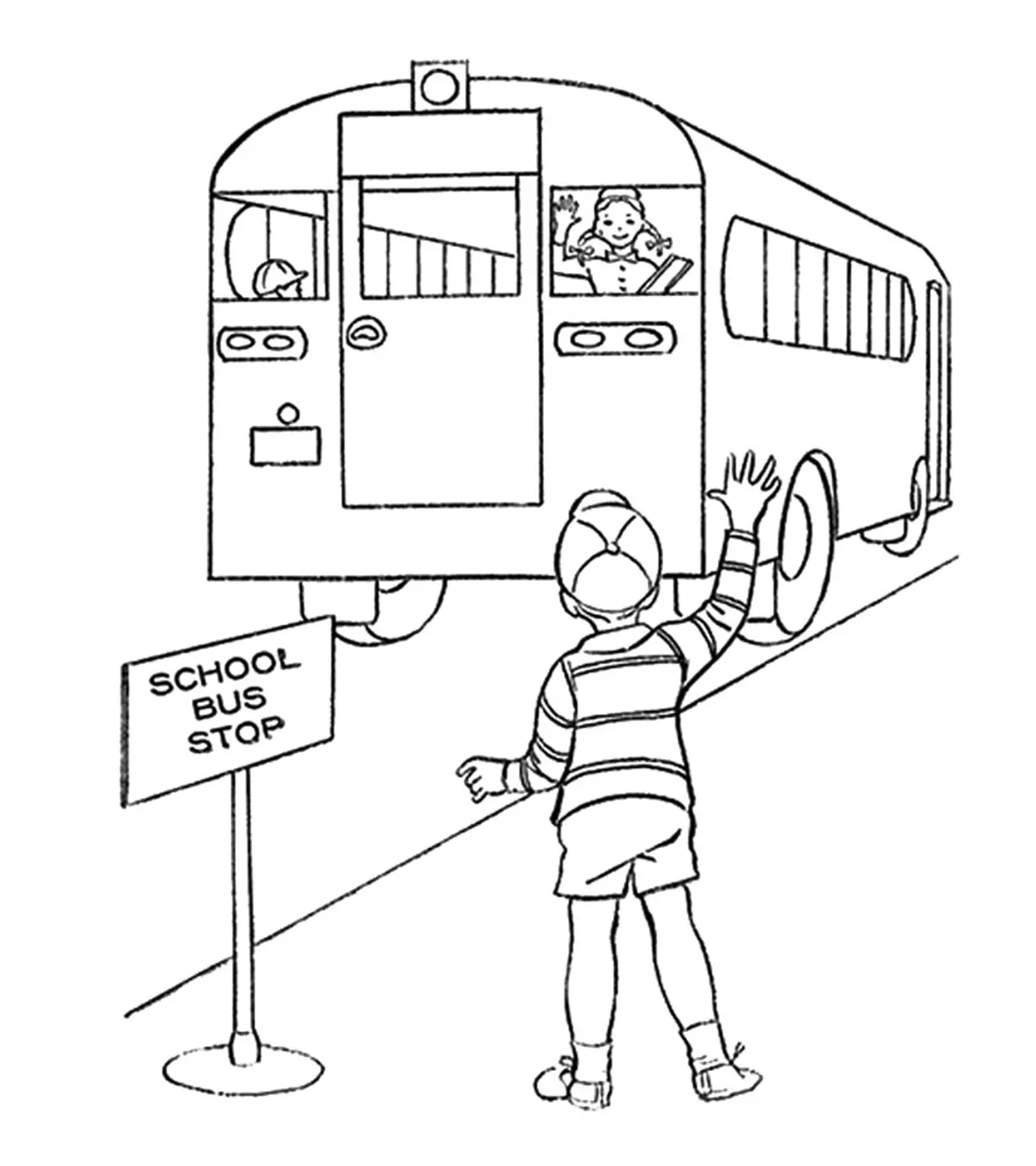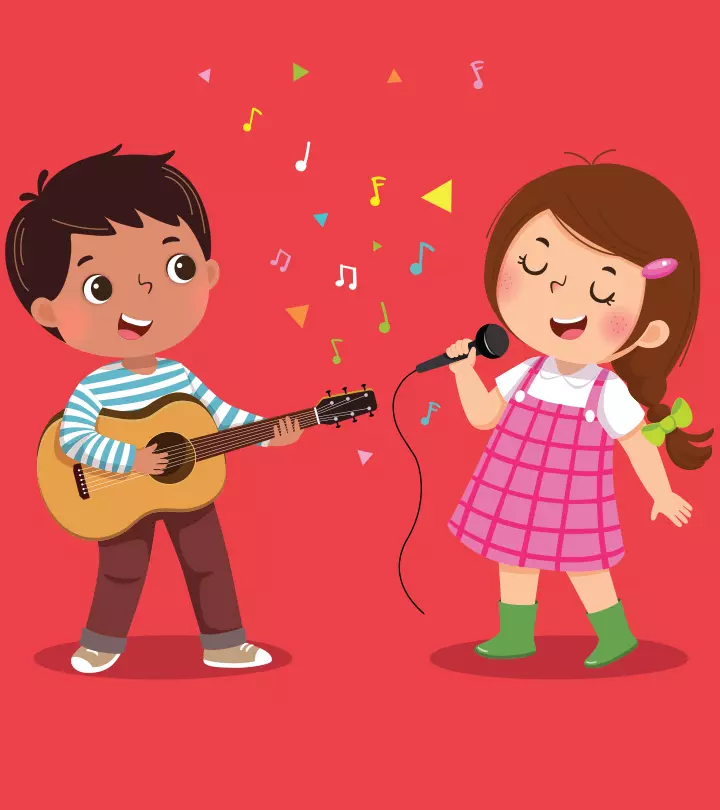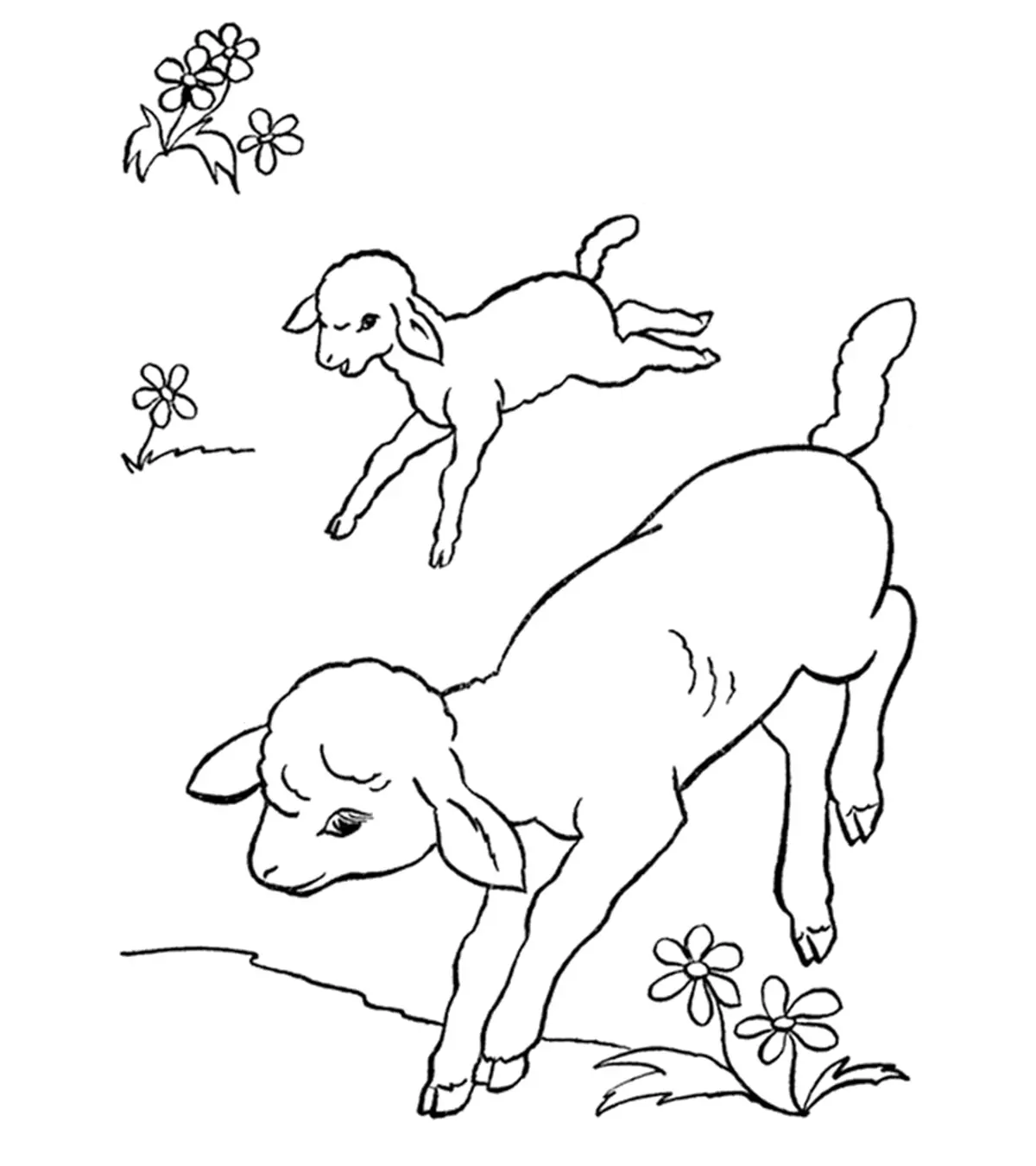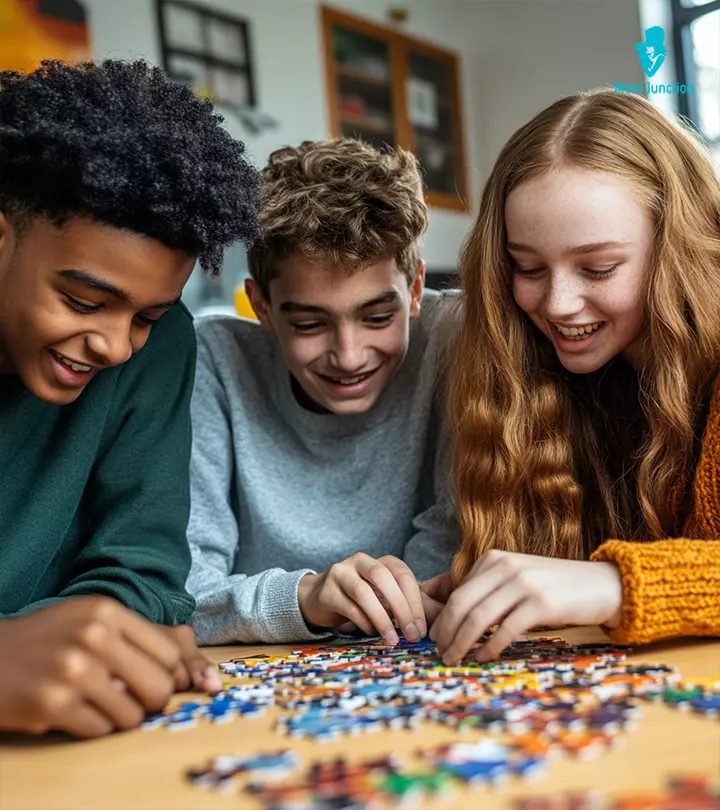
Image: Midjourney/ MomJunction Design Team
While some teenagers can get along with their peers or a group, others might struggle to work together in a team. Teen team building activities are a great way to teach your wards the art of teamwork and instill leadership skills in them. There are certain interesting games and activities that can come to your rescue and help teens build interpersonal skills to survive in a group. In this post, we share with you some team-building activities that help teens become team players and build self-awareness and trust. These activities also foster communication and cooperation and help enhance critical thinking and problem-solving skills among teens. Scroll down.
Key Pointers
- Teens can improve their interpersonal skills and teamwork through team building activities.
- Participation in such activities encourages communication, better planning skills, motivation, and collaboration.
- These activities expose teens to different perspectives and individual skills, promoting self-awareness.
- Leadership skills, critical thinking, and cooperation among teens can be promoted through team building activities.
- You can engage teens by choosing games with achievable goals.
Types Of Team Building Activities
Team-building activities can be categorized into four types.
- Indoor: These activities include games and workshops for rainy or snowy days. They help tackle issues such as problem-solving and leadership skills. Board games and puzzles are some of the activities you can consider.
- Outdoor: Let your teens go outdoors on a perfect day and do these activities. These activities may include physical challenges such as cycling or climbing.
- Virtual: If the teens live far away from each other, virtual team-building activities can bring them closer. Escape rooms and trivia games are some ideas for great team-building in teens.
- Community service: These activities involve volunteering and helping the community. Besides developing their team-building skills, they positively impact others and teach teens the value of selfless service.
Benefits of Team Building Activities
Here are some positive aspects of team building activities for teens (1) (2)
- Build relationships: As your teen gets involved in a team-building activity, they learn to interact with different people. This interaction exposes them to the concept of individual perspectives, which is an important part of social skills.
- Sharpen communication skills: Some teenagers are introverted and struggle to communicate. Team building activities and games can provide them with a good opportunity to learn to mingle.
- Motivate: Research shows that teenagers can be immensely encouraged by their peers. Therefore, team building games or activities with their friends or classmates are an opportunity for children to get motivated to work on a given task.
- Promote productivity: Working in a team means coming up with multiple ideas and collating them to address the problem in hand. This pattern of working helps teens identify their strengths and weaknesses, which can be used to enhance efficiency and productivity.
- Develop critical thinking: In the process of contributing individually to the activity, teens learn about various ways to face a situation. Group activities for teenagers broaden their logic and problem-solving skills that are necessary to achieve a goal.
- Enhance cooperation: Team building activities teach your teenager cooperation with different sets of people in order to achieve a common goal.
- Enable feedback: It provides the opportunity for teenagers to receive feedback and to utilize them constructively.
- Develop leadership skills: These activities encourage a sense of agency and responsibility and can help the teenager to acquire and develop their leadership qualities and skills.
- Foster inclusivity: They encourage everyone to take part, making sure all the participants feel valued and heard.
Team Building Activities And Games For Teens
These are a mix of teen team-building games and activities that deal with various areas of development, such as problem-solving, decision-making, adaptability, planning, and trust-building.
1. Boo the dragon

- Divide teens into teams of six to seven members each. One teen plays the dragon and thus becomes the judge.
- In the game, teens live in a village that is under the dragon attack, and they need to scare away the dragon. Each team represents a village.
- The villagers need to arrange themselves in order of tallest to shortest while they are blindfolded.
- They can discuss among themselves and try ways to stand in a line in increasing order of their heights as fast as possible.
- Once the task is completed, the villagers have to say “Boo!” to scare away the dragon. The team who finishes the task and is first to say “Boo!” to the dragon wins the game.
- You could also use a timer to make the game more interesting.
- This game can improve teens’ communication skills.
2. Silent line-up

- The participants have to stand in a line, with respect to certain characteristics. For instance, you can ask all the teens to stand as per their shoe size.
- So, the participant with the smallest shoe size will be first in line, whereas, the one with the highest will stand last.
- The twist here is that they have to arrange themselves in a particular order without talking to each other.
- Make a list of different characteristics beforehand. You can include different aspects such as height, outfit color, and hair length.
- This game teaches teens that communication goes beyond verbal. It is also a great icebreaker for shy teens.
3. Electric fence

- This game is all about trust and good teamwork, where all the members have to think smart.
- Make teams with four to five members each.
- Tie a rope at a height from the ground. It represents the electric fence.
- Now assign a time limit, say 30 seconds, within which each team has to jump over the rope and cross the ‘electric fence’ safely without stepping on the rope.
- You can let one team perform at a time and then see which team has finished the task faster.
- This game tests children’s physical skills and capability to perform the correct action at the right time.
4. Collab to create

- Choose a final product/project with several elements that you want the team to work on. For instance, you can ask the team to develop a storybook for toddlers, wherein, each teen will have to write a part of the story.
- Working towards a common task/goal with individual components will enhance their collaboration skills. The teens will also learn the importance of productive communication.
- Keep changing the prompts and items. For instance, you can ask them to build a robot with Lego blocks or a statue with toilet paper.
- Teens have a powerful imagination, which can be unleashed with this game. It is great for rainy days when teens need to burn energy yet cannot go outside.
5. Unknot

- Ask all the teens to stand in a circle, stretch their arms, and close their eyes.
- Once they do that, ask them to hold the nearest hands without looking at whose hand they hold. You could also blindfold them.
- Since the hands would have tangled, the challenge then would be to detangle the human knot without letting go of the hand they held.
- Teens will have to work together to go over and under one another in a weave pattern.
- This game helps enhance faster and accurate decision making through effective communication. It is one of the best examples of games and activities that enhance interpersonal communication.
Ester Lee, the STEM teacher and blogger, speaks about playing ‘Unknot’ in her class. She says, ”The kids loved this exercise. We would pull it out every few weeks. When we first started, there was no end to the confusion and lack of coordination on the kid’s part. But by the end of the season, they figured out how to appoint a ‘director’ to tell them how to undo the knot and they were able to untie the knot (i).”
6. Paintballing

- This active team activity needs physical strength and is considered one of the most entertaining outdoor games for teens. Paintballing may seem a bit too rough for some teens. However, it can be fun too.
- To play the game, you need two teams. Each team will be given a certain number of balloons filled with colors. The task is that each team has to throw these balloons on the opposite team and try to paint each member. The member who gets hit by the colored balloon and has color over him/her will be eliminated.
- Ensure the participants wear protective gear, and supervise the activity closely to ensure their safety.
- This way, one team has to eliminate the maximum number of players from the other team.
- Each team member learns to work together, defend themselves, and protect one another by planning strategically as a team.
- Teens can play this game in dedicated paintball arenas with appropriate safety equipment.
- Paintball requires players to think on their feet and come up with strategies to escape their opponents while still managing to hit them. These strategizing techniques can prove useful for teens.
7. Photo finish

- Draw a straight line on the ground and ask all the players to stand on one side of the line.
- Then, when you say go, they have to cross the line at the same time.
- They can jump or simply walk over the line. But it must be done simultaneously.
- It sounds easy, but it is not. It takes a few tries and some creative problem solving to know how they can all cross the line at the exact time.
- This game can be more fun if you click pictures or take videos of the activity.
- This game is great for developing teens’ problem solving skills. They have to understand the problem and come up with a solution that works for everyone.
8. The egg drop

- Provide the players with plenty of household materials and a carton of fresh eggs.
- They should use the provided household material to create a container in which they will drop the egg.
- The goal here is that the dropped egg must not break.
- The activity can be made challenging by asking the player to stand on some height, like on a chair before dropping the egg.
- Another player should hold the container to catch the egg.
- It is a good instance to teach your teen the value of thinking out of the box.
- The team that manages to keep most eggs intact is the winner.
- Switch eggs for balls if you do not want too much mess.
- This game requires precision and critical thinking skills. They need to anticipate when and where the next egg will come from and be ready to catch it. It develops hand-eye coordination of teens too.
9. The future antique
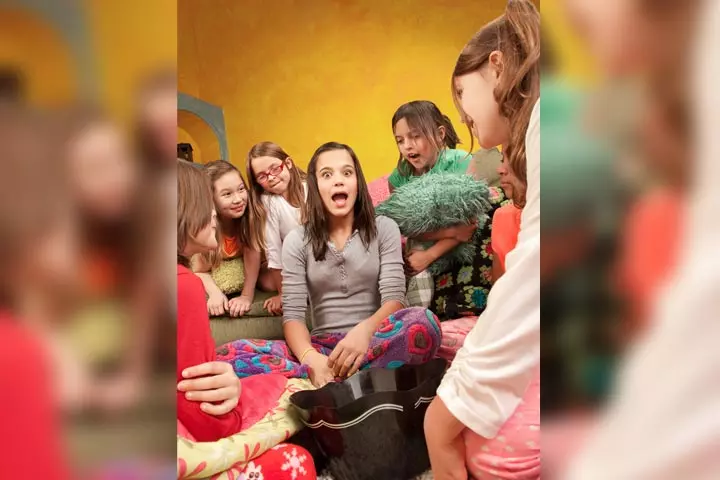
- Begin the game by dividing the players into a few teams.
- Ask each team to pick an item from a pile of random household materials like broken mugs, pipe cleaners, cardboard boxes, a broken watch, etc., and make up a story about the item being found as an “antique” 500 years in the future. This whole process should be completed in five minutes.
- They should talk about the uses and benefits of the object compellingly.
- The challenge here teaches your teen to work collaboratively. This needs quick and accurate communication among teens, which is effectively coordinated by a leader.
10. Draw back-to-back

- Begin this great activity by randomly arranging the teens in pairs with each pair representing a team. Each team member sits back-to-back with their partners, that is, they sit facing away from each other.
- One teen will receive a blank piece of paper with a pen or a marker. The other will receive a piece of paper with a shape or simple drawing on it.
- The teen who receives the illustration should verbally describe the drawing to the other teen without looking at him/her. The other teen is supposed to draw the illustration by listening to the verbal instructions alone.
- Start with simple drawings such as stick figures and proceed to complex ones.
- The team that completes the task first wins the game.
- This game teaches teens the importance of communication to achieve good results.
11. The baggy skit

- It is a fun-filled activity that often brings a great laugh. Besides, it also provides a great opportunity for teens to identify the strengths and weaknesses of each team member and utilize it for the team’s benefit.
- Start the game by dividing the teens into teams of four or five participants each.
- Give a bag containing three to four household items to each team.
- Each team now has to perform a skit using the items as props. The team that uses the items most effectively wins the game.
- Recording the skit that each team performs will be a good idea as the teens can watch it and cherish the memories.
- This game teaches teens the value of observation. They also learn to improvise using basic props and learn teamwork.
12. Creeping closer

- This activity can teach the teen to be observant and to develop healthy competition skills.
- Divide the teens into teams; each team has to select a teen as the “captain.”
- The captain has to stand on one side of the play area, facing the wall/fence. The remaining participants stand on one leg at the opposite end of the fence/wall.
- The objective of the game is to reach the captain.
- When the captain shouts, “Start,” the participants slowly start hopping towards the captain in complete silence.
- If the captain turns around, the players have to freeze. Once the captain turns around, the team continues to hop to reach the captain.
- If the captain sees anyone move from their place or anyone falls, then the entire team will have to return to their start position.
- This game is similar to the famous “Red Light, Green Light” game.
- It helps develop children’s coordination and observational skills.
13. Human pyramids

- It is an active outdoor activity that demands teamwork and physical strength. This activity can foster bonding among team members through teamwork, fine leadership skills, and effective communication.
- Start the game by dividing teens into teams of four or five members each.
- Then, each team forms a human pyramid within a stipulated time, say five minutes.
- To do this, three team members kneel down on all fours, and then the next three climb on their backs and make another layer. In the pyramid, team members should stand in a circle facing inwards.
- Make sure the ones at the bottom of the pyramid have the capacity to carry weight, as they will be bearing most of it.
- A human pyramid is a test of children’s physical strength and strategic planning. They should be positioned such that they can balance easily while also being accessible to the players who will make up the next layer of the pyramid.
 Quick fact
Quick fact14. Treasure hunt
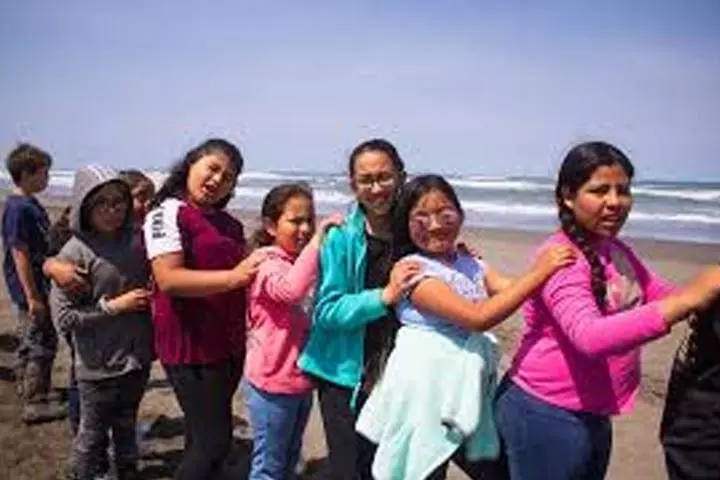
- This is a fun-filled activity that teens will love for all the giggles and laughter it brings. This game is best for developing children’s leadership qualities and communication skills and encouraging teamwork (4).
- In the game, divide the teens into teams of four to five members each.
- Ask each team to stand in a straight line with all facing in one direction. Each teen places their hands on the shoulder of the teen in front of them to form a line.
- The teen who stands at the front of the line is blindfolded.
- Spread different items across the room or field.
- Each team has to collect these items while maintaining the line. The non-blindfolded team members guide the blindfolded front-ender through instructions, such as “move right,” “take three steps forward,” and so on.
- The team that collects all items in the least amount of time wins the game.
15. Jigsaw puzzle

- Take a jigsaw puzzle and divide it into small sections.
- Provide these sections of the puzzle to different sub-teams within a team.
- Each sub-team has to complete the puzzle as quickly as possible.
- As one person can have pieces from different parts of the puzzle, they have to coordinate and get their pieces from each other.
- Once done, all the sub-teams work together to complete the large puzzle that is the entire picture.
- This activity helps enhance the problem-solving skills of teens. It also helps in the development of cooperation and teamwork, which is necessary to achieve bigger goals. As solving a jigsaw puzzle needs focus, it may be one of the best therapeutic activities for teens.
 Did you know?
Did you know?16. Blanket volleyball

- This game is a perfect example of teamwork and coordination.
- In this game, you need to divide the teens into two teams.
- Hand over a large sheet or blanket to both teams.
- The task is that each team has to throw the ball over the net to the opposite team, who has to catch the ball using the blanket or the sheet.
- The team that has maximum catches is the winner.
- The game is designed to improve children’s hand-eye coordination and encourage teamwork. While catching a ball on a blanket may seem easy, it is quite difficult unless there is proper communication between the players of a team.
17. Blind Pictionary
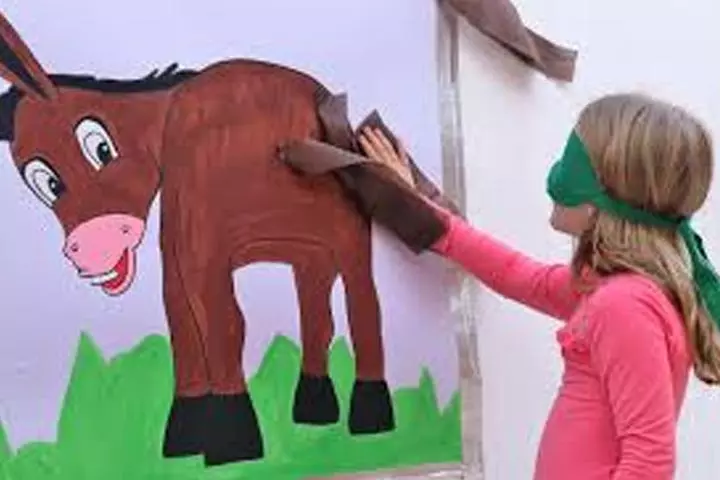
- This is a simple yet fun-filled team building activity that makes a teen learn teamwork by analyzing and utilizing the team strength.
- To start the activity, divide the teens into two teams. Now, each team will take turns to draw an image on the board.
- The twist here is that the team member who draws will be blindfolded. So as he/she draws the image whispered to by the judge, his/her teammates have to identify that image.
- The team that guesses the maximum number of images will be the winner. You can also set a time limit to make the game challenging.
- This game is a great way to encourage communication between players. They will also learn how to trust each other while playing this game.
18. Build a bridge

- Each team has to strategically utilize the given resources to complete the primary objective within the set time limit.
- Divide the group of teens into two teams. Assign a bowl of water and a building kit with items like pop sticks, putty, string, paper clips, etc., to each team.
- Set the timer for 20 minutes and ask the team to prepare a bridge that runs over the water bowl.
- Once the time is up, each team will demonstrate the strength of their bridge by placing pebbles on it. The bridge that falls first loses the game, and the winning team gets a prize!
- You can keep changing the items to make the building activity more interesting.
- This is one of the best social skills activities for teens as it allows them to interact, make plans, and execute them effectively.
19. Spot the difference
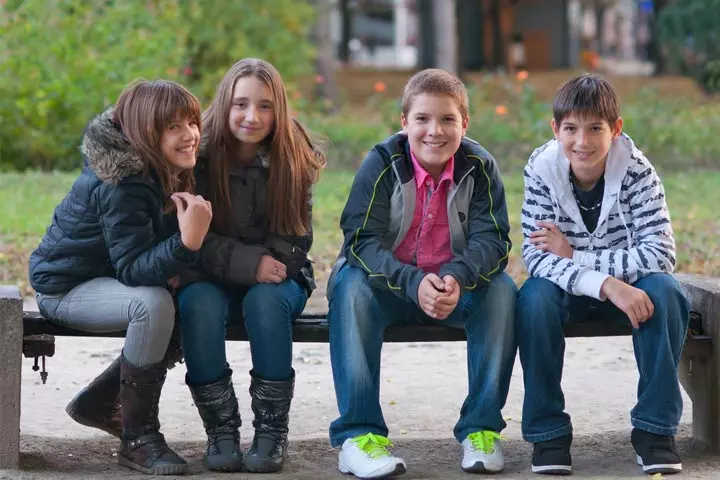
- Divide the players into two teams.
- Ask the first team to stand in a line facing the second group.
- The second team has a set time (say, five minutes) to look at the other team’s appearance.
- Once their time is up, the second team will leave the room, and the first team will change ten things about them.
- The ten things must be noticeable. When the second team returns, they must observe the first team again and identify the ten things that changed.
- Each correct guess or identification grants a point, and the team with maximum points wins.
- This is a great game for improving one’s memory.
20. Looped to rope

- Divide the teens into two groups. Each group should have a minimum of five members.
- To play, make a big circle out of rope for each team and put it on the floor.
- Each team has to stand at the edges of the circle, so the rope is taut around their ankles while holding their hands in the air.
- Team members must take turns moving to work the rope up from ankles to wrists, keeping hands in the air at all times. The team member will have to wiggle and move to slide the rope up. Other team members can help by keeping the rope as taut as possible.
- The team that finishes the challenge first, wins!
- You can also include a timer to make the game more fun.
- This fun activity helps enhance communication and problem-solving skills.
21. Lap sit
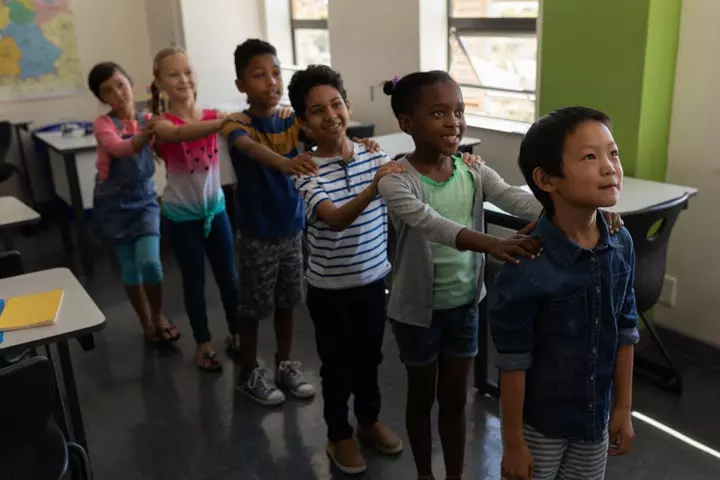
- This game suits a group of more than ten players.
- Ask the teens to stand in a circle, facing counter-clockwise.
- Instruct the players to put their left leg inwards towards the circle and move in and shrink the size of the circle.
- The players keep moving closer until each player is touching the other player’s side.
- On a count of three, the players put their hands on the shoulders of the player in front of them.
- Then tell them to sit down slowly. If the teams do it correctly, then they will end up sitting in each other’s lap.
- Engaging in this team-building activity could enhance socialization skills and promote effective communication.
- Make sure you click pictures and record videos to capture the fun as they figure out the best way to sit without falling.
22. Dog, rice, and chicken

- Divide the players into teams. One member from each team will be asked to play the role of a farmer while other team members will act as villagers.
- The farmer has to return home along with his/her purchases, i.e., dog, rice, and chicken, by crossing a river in a boat.
- The challenge, however, is that the farmer can carry only one item on the boat. But the farmer has to ensure that the chicken does not eat the rice, and the dog does not eat the chicken.
- So, how does he/she get all three purchases safely? The villagers can help him/her in finding a solution.
- The team that completes the task first wins.
- This game is a perfect brain teaser for teens to think creatively.
23. Tug-of-war
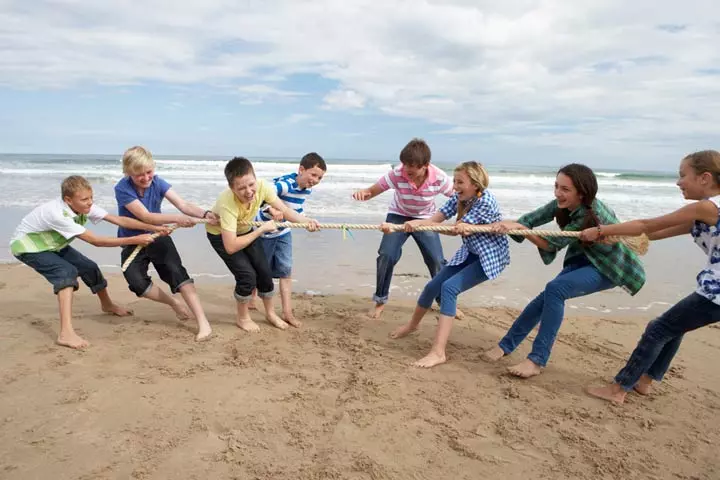
- Divide the teens into two teams. Each team will stand facing one another while holding the end of a rope.
- Place a marker in the middle of the rope and draw a line on the ground. At the beginning of the game, the marker on the rope should be precisely above the line on the ground.
- Instruct the teens to hold the rope tightly. Once the teams are ready, the group moderator will blow the whistle.
- The teams start pulling the ropes with all the strategy and strength to bring down the opposing team.
- The team that gets the opposite team pulled beyond the central line wins the game.
- This game is great for developing children’s physical strength.
 Trivia
Trivia24. Tower of Hanoi

- You will need a puzzle toy with three towers or pegs. One tower, at the extreme end, will consist of several discs arranged in a way with the largest at the bottom and the smallest on top.
- The goal is to move the entire stack of discs from the tower at one end to the tower at the other end.
- The team can use the middle tower to temporarily place the pegs while moving pegs to the other end. However, the rules are that only one disc can be moved at a time, and you cannot place large-sized discs on smaller discs.
- You can time the game. The team that gets all the discs from one tower to another wins the game.
- Increase the number of discs and pegs gradually. This will add to the complexity of the game.
- The game involves mathematical and logical twists that provide ample opportunities for discussion, problem-solving, and planning.
25. The consensus exercise

- Divide the players into four or more teams, depending on the strength of the participants.
- At the mediator’s signal, each team has to nestle closely and come up with a sound and action to perform for the other teams.
- Each team performs twice for other teams.
- The goal for all the teams is to make the same sound and do the same action at the same time.
- The game will continue until all the groups perform the same sound and movements in synchrony.
- This game is similar to Chinese Whispers but for teams.
- It is one of the best games to teach the importance of communication to teens.
26. Pass the hula hoop

- Make the players stand in line with one kid holding the hula-hoop over his/her arm.
- Tell the players to join the hands and try doing the shuffle, shove, and shimmy together.
- They have to shuffle the hula-hoops over their shoulders, arms, and legs to pass it to the partner next to him/her.
- The goal is to complete the passing of the loop without breaking the chain.
- Any player who drops the loop will be sent out to the team.
- The team that passes the hula-hoop from one end to another in the shortest time wins the game.
- This game tests players’ physical endurance while also improving their critical thinking skills.
27. Helium stick

- Divide the players into two teams and let them stand in a line shoulder to shoulder. Each member extends their hands forward with their palms facing upwards. They fold their fingers to point only their index finger forward.
- Place a long rod in such a way that it rests on each player’s finger.
- On the count of three, the teammates have to place the rod on the ground or floor without dropping it.
- This game requires intense concentration and teamwork.
- The team that completes the challenge first or in the shortest amount of time wins the game.
28. Animal farm
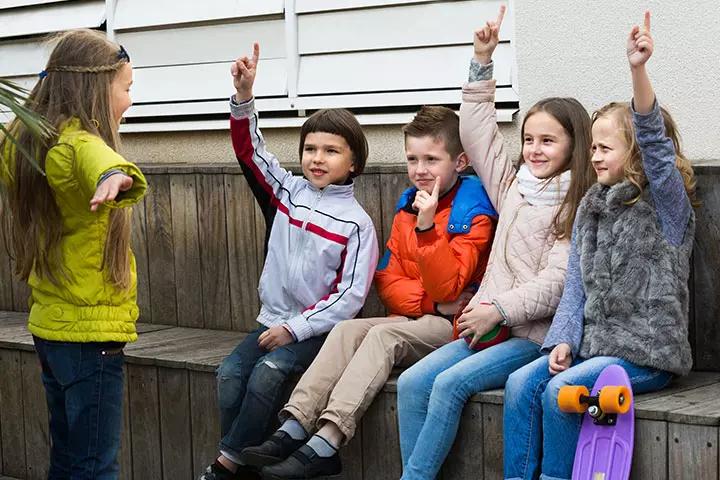
- Write different animal names on slips of paper. You may choose to write domestic or wild animals, birds, or any category of animals.
- Divide teens into groups with equal members.
- Each participant picks a piece of paper and acts out the animal without speaking. They may make sounds or behave like that animal.
- The other teammates should guess the animal. Each correct guess earns a point.
- If you want to have a variation and make the game more challenging, you may set a time limit for each round.
29. Spy Who?

- Take an A4 sheet and cut out uniform slips from it.
- Choose a location from the world map and write it on all slips of paper except one. In the leftover paper slip write the word ‘spy’.
- Toss the papers in a cup and mix them well. Let each player randomly select a slip and keep its content secret.
- The participants who have the name of the location must decipher who the spy is by using their interpersonal skills to ask questions.
- The one who is the spy must use their listening and analytical skills to understand the clues, and find out the location before he or she is called out.
- This game is also an excellent choice for improving teens’ problem-solving and social skills.
30. Song Charade

- Split the group into teams consisting of four to five players each.
- Now ask one player (called guesser) from each team to go into a different room.
- To the rest of the team members, play a song.
- Now ask them to help the guesser guess what song it was without speaking a word.
- The other players can use gestures or expressions to describe the song.
- The winner will be the first guesser to guess the word correctly and sing a line from the song without mistakes.
31. Build It Up

- Divide the group into two or more equal teams.
- Give each of them a pack of uninflated balloons, string, and rolls of tape.
- Set a timer of ten minutes for them to make an arch out of as many inflated balloons as they can.
- The team that builds the biggest arch and coordinates best to finish the task wins the challenge.
- Start the challenge and watch the teams come up with creative ways to build their arch.
- If you have more time, give them uninflated balloons and ask them to inflate them as they build.
- This game allows teens to come up with unique ideas to make the highest tower.
32. Marooned

- Divide the group into two or more teams with an equal number of participants.
- Give them a hypothetical situation where they get shipwrecked and need to collect a few items to carry with them to survive.
- Give each team a list of items they need to pick from and give them ten minutes to discuss and jot down a list.
- You can include twigs, fruit, leaves, etc. with quantities mentioned beside them.
- Once the time is up, ask each team to share what they picked and why they as a team assumed it is the best choice.
- The team with the correct list of items and the most convincing reasoning wins.
- This game promotes problem-solving, critical analysis, and resource utilization skills.
33. Paper Cup Pyramid

- Divide the group into teams consisting of three people.
- Give the team members a dozen cups and a set of uninflated balloons.
- Ask them to stack the cups into a tower as people from the opponent teams try to blow it out using the air from their balloons.
- The team that makes the highest tower in under a minute wins the game.
34. Pass Along

- Divide the group into two equal teams and get them to stand in two parallel lines facing each other.
- Give them a bucket filled with water to keep on one end and an empty bucket on the other end.
- Give each of the different types of cups and glasses.
- Ask them to pass the water to fill the other bucket using the resources at hand without spilling the water or moving from their place.
- Check the level of water in the bucket at the end of the game.
- The team that spills more water loses the game.
- This game requires proper teamwork and communication to make it work. Each team member must perform their role perfectly.
35. Story Weaver

- Divide the group into two teams. Give a line for a story to the teams.
- Ask the team players to take turns to weave a tale using their creativity and active listening skills.
- To add to the difficulty level of the game, give one team a set of cards with a description of a character and the other team a set of cards with an object mentioned in them.
- Ask the teams to discuss amongst themselves and give a card at random to members of the opponent team during their turn.
- Watch as they let their inner children loose into the forest of their imaginations.
36. Dance Whisperer

- Make two equal teams and get one team to stand in a single line with one person facing another’s back.
- Ask the player at the end of the line to show a dance step to the player before them while ensuring that the other players from the team don’t see it.
- This person passes the message to the one in front of them and so forth until the person at the forefront of the line receives it.
- Once received, ask the person at the front to showcase the step to the one who started sharing the message. Ask them to tell how correctly their message has been received.
- Do the same with the other teams. The team that receives the message without much error is the winner.
- This version of the message passing game actively engages your communication and imitation skills.
37. Origami Race
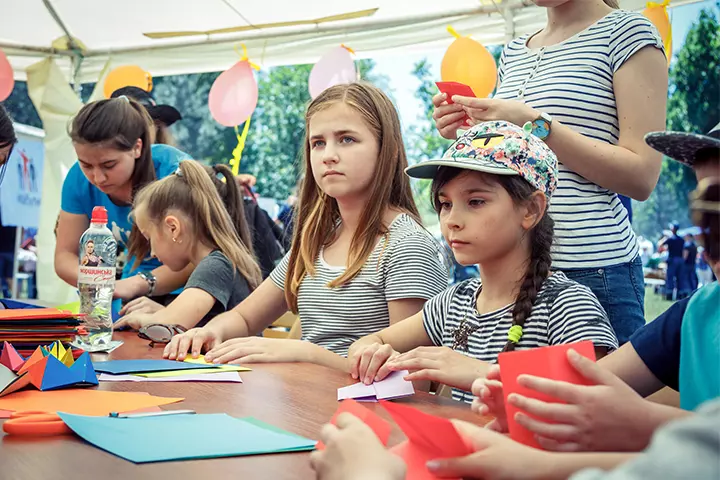
- Divide the group into teams of four to six participants each.
- Give them sheets of colored paper and ask them to make as many pieces of origami ships as possible within a minute.
- Instruct them to form a production line to do this task.
- The first person can fold the paper in half, the next can fold it into quarters, and so on.
- Set the timer, get them started, and watch them coordinate with each other to race the other teams to the finish.
- The team with the most number of ships wins the race.
- Origami is great for developing the fine motor skills of teens. The game also teaches teamwork and proper organization.
38. Blind Traveler

- This game, also known as Traveling Teams, is great for encouraging teamwork. It improves children’s communication skills and helps build trust (4).
- In a large, open area, set up an obstacle course using various objects like chairs, desks, hula hoops, and strings. Ensure the course is challenging but not overwhelming, with enough spaces between obstacles.
- Divide the participants into teams of three and provide each team with a blindfold.
- Each team has one member who becomes a blindfolded traveler, while the other two team members guide them through the course verbally.
- Start the game and watch as the players learn to build trust through precise communication and active engagement with members.
- The team that successfully completes the obstacle course without falls or failures wins.
39. Team Bingo

- Ask the team to sit around in a circle.
- Distribute among the team members a personalized bingo cards that contains some statements on hobbies, skills, and personality characteristics. Include prompts such as “Someone who has red hair” or “You love the color blue.”
- Ask them to go around the circle to see who has chosen a box with a statement that is in common for both of them and tick it off together. Repeat the process until one of them wins a bingo.
- Start the game and watch as the team members get to know each other, and develop communication and observational skills.
40. Shrinking Space

- Divide the group into teams of three.
- Assign a defined standing area for each group using sheets of newspaper.
- Play some music and ask them to dance where they stand. Stop the music and ask them to fold the paper from the middle. Once folded, get the group to accommodate themselves on the paper and continue dancing.
- They can also stand on top of one another to save space.
- Gradually reduce the standing area for each group by getting them to fold the paper smaller and smaller. This will challenge their spatial intelligence, bodily abilities, and logical thinking skills.
- The team that fits into the smallest area wins the game.
41. Magic Carpet

- Divide the bigger group into teams of three. Hand each of them a small carpet.
- Each team stands on three-quarters of the carpet’s surface area.
- Set a timer and ask them to work together to flip the carpet upside down without stepping off of it.
- The team that finishes fastest and lands successfully on the other side wins the game.
- This is one of the best games for improving a teen’s spatial awareness and problem-solving skills.
42. Collage Time

- Divide the group into teams of four. Give them a chart paper, pencils, glue, and several colorful magazines.
- Ask them to decide on a thematic name for their team and make a collage that represents it.
- Get them started and monitor the time they take.
- The teams will be based on the time they take to make the collage, their coordination, creativity, and the appeal of the finished product.
- You can also ask them to collect theme-based items such as leaves or colored pieces of cloth to make the collage.
43. Conjoined Relay

- This game may preferably be played outdoors.
- Divide the group into teams with four to six players each. Pair the players and tie them together at their wrists and ankles.
- Keep a sandpit with some objects buried inside it on one end of the track and a few empty baskets on the other (the number of baskets will depend on the number of teams.)
- The players have to dig out as many objects as they can from the pit without using the conjoined hands and relay them to be carried towards the basket.
- The time limit for the activity is five minutes and the team that collects the most number of objects in their basket wins.
- This game teaches coordination, communication, and teamwork.
44. Virtual Radio Show

- Ask your group to divide themselves into teams of five.
- Give them a show theme and ask them to record a radio show with clear segments covering interesting facts, interviews, songs, and trivia in the body.
- This will enable them to develop communication, as well as technical and organization skills along with being a team building task.
- Test run the show and refine the edits. Once done, do a final recording and market the radio show to the other teams.
- The team with the most entertaining and well-organized show will be the winner.
- Ask the winning team to broadcast their show to the school.
45. Sing A Song
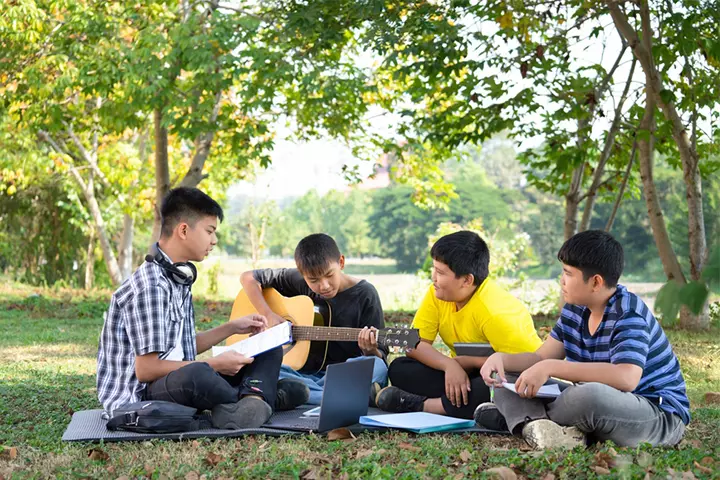
- Divide the group into teams of four.
- Have a bowl full of slips of paper with themes written on them and get the teams to pick them up at random.
- Encourage the teams to use their creativity and linguistic skills to write a song or a rap in thirty minutes on the theme that they have picked.
- Start the timer and let them begin. Once the time is up ask them to perform the song in front of the other teams.
- The team with the best lyrics, rhythm, and rhyme scheme shall win this game.
46. Escape Rooms Remote

- Divide your group into teams of five. Pick a virtual escape room platform and a theme for each team.
- Encourage the team to virtually collaborate in using their observation skills, logical thinking, and analytical styles to decode clues and solve puzzles.
- The team that escapes the fastest will be the winner.
- Once complete, you may even gather the team to discuss what strategies they used and what worked best for them in each scenario.
47. Virtual City

- Divide your group into smaller teams of three or more players.
- Download the Minecraft gaming app and ask them to pick a theme from a list of choices.
- You can also give them different choices such as “build a pool” or “build a house that will withstand a storm.”
- Set a timer for thirty minutes and get them to start construction.
- Once done, the members may share a small video clip of their virtual creation for the other teams to judge them.
- This game teaches teens to manage their resources and time to build a perfect building that matches the prompt.
48. Freeze

- Ask the team to form a circle around a stereo.
- Keep a chair across the room for them to reach.
- Inform the team that they will dance as they move towards the chair when the music starts and freeze when it stops.
- If someone runs or walks without dancing, their team must return to the starting line.
- Play music and pause the music to see them try to race each other to the chair while they dance.
- The person who moves once the music stops is disqualified, while the person who manages to reach the chair and sit first is crowned the winner.
- This game develops a teen’s reflexes and cognitive skills.
49. Toss Splash

- Divide the group into two teams and get them to an outdoor space, such as a garden.
- Fill a few balloons with water and hand them over to one member of each team. Ensure that each team has a designated color for them.
- Now instruct the team members to toss the water balloon to a team member who stands about two meters from them. If done successfully, ask the next team member to replace the previous one at three meters.
- Similarly, with each consecutive success increase the distance. However if the balloon breaks or gets dropped reduce the distance.
- The winner is determined based on which team has gone the farthest or whichever team members are first to reach the person who is throwing.
- This game is great for improving spatial awareness in teens.
50. Sales Pitch

- Divide the group into teams of three. Provide them with a box of recyclable waste, waste crayons, wax candles, waste soap, and cupcake molds.
- Ask each team to design any product out of these materials.
- Once done, ask them to put forth a sales pitch to the opponent teams to sell their work of art and get the buyers to vote.
- The product that is voted on by the most people wins.
- Creativity, imagination, and communication, all come into play when teens perform this activity.
51. Pitch Perfect

- Split the group into two teams having equal participants.
- Have them pick out a word from a list and sing a song using the word as the theme.
- Get them to pause at one point and ask the next group to sing a song following the same theme. If any team takes more than 10 seconds of pause before singing the song, the team will be disqualified.
- For instance, if the word “friend” is chosen, the first team should sing a song about a friend or friendship. The next team should be ready with their selection when their turn comes.
- Once all groups are done, choose the next theme and keep going until there is a winner.
52. Crocodile Crossing

- Divide a wide open space into three parts by drawing two parallel lines, keeping the middle portion (the river) wider than the other two parts (the riverbanks).
- Split the participants into two teams with an equal number of participants.
- Each team has to strategically get their members across the river one at a time without stepping into it. They may use any props that are present around the room to help their team members.
- Any team that has a member’s foot falling in the river gets disqualified. The team with all members across the river wins the game.
- To make this more challenging, you may even appoint a member from the opponent team as a crocodile. The crocodile will be allowed to either push the stepping props out of the way or attack the members on the riverbank (without stepping onto land). In such a case, the team may also be disqualified if any member gets touched by the crocodile.
- Keep varying the speed of the crocodile so that the team crossing the river keeps guessing.
- It helps improve children’s strategy skills.
53. Stay Afloat

- Divide your players into two equal teams. In an open space such as a lawn or playground, make the teams stand in circles.
- Hand each of them a different colored ball and ask them to ensure that the ball stays afloat by tapping it from below.
- Use balloons instead of balls to make it more challenging.
- Instruct them that, once in the air, no player can catch the ball or tap the ball twice in a row.
- Start the game and time it. The team that keeps the ball floating the longest wins the game.
- This is another game that improves children’s spatial awareness.
54. Meet In The Middle

- Make the participants stand in a single line in the middle of a room.
- Have a list of characteristics and experiences at hand. The list must start with simple ones like ‘I have a sibling’ and move towards complex personal ones like ‘I was bullied in childhood’.
- Instruct the participants to take a step forward if something from the list is true for them, and take a step back if something isn’t.
- This game uses non-verbal communication to help the team understand their members and build a bond over shared experiences, empathy, and mutual respect.
55. Free Falling

- Place a footstool in the middle of the room and ask the participants to form a semi-circle near it.
- Ask one participant to climb onto the footstool and prepare to fall backward at the count of three. Ask the other participants to prepare to catch the falling tree.
- Give the count and start the game. Ensure that each participant takes turns to do the trust fall and the others stay prepared.
- Once all members have done the trust fall, you may replace the footstool with a chair, followed by a table to see how far the participants trust their team members.
- Through this activity, teens learn to recognize the signs of a trustworthy person and build trust.
How To Keep Teams Engaged During The Team Building Activity
You may use these tips to make teens participate and keep them engaged.
- Choose games with goals and challenges that are easy to understand and achieve.
- You can make the goal difficult, but ensure it is attainable. A goal that seems impossible can demotivate the teens and lead to a lack of active participation.
- Clearly communicate the benefits of the activity that you have planned. Set a reward system so that an environment of competition and enthusiasm is created.
- Make the activity attractive and challenging. For instance, a simple run could be made challenging by setting obstacles on the race track.
- As a trainer/mediator/facilitator, create an environment of cooperation and trust.
- Guide and encourage them during the activity and try to keep their morale high.
- Clearly communicate the rules and safety aspects of the activity.
- Even when you have made arrangements for participant safety, be vigilant during the game/activity. Set proper penalties for flouting boundaries and safety rules.
Frequently Asked Questions
1. Are there any virtual team-building activities for teens?
Some virtual team-building games for teens include Virtual Team-Building Bingo, Virtual Book Club, Virtual Scavenger hunt, and Virtual Trivia.
2. What are some tips for organizing effective team-building activities for teens?
Selecting fun and interesting activities that are age-appropriate and cater to the interests and personalities of the children will ensure maximum involvement. Making it fun and interactive gives the children enough time to observe and approach the problem or activity. Help the teens reflect on their contribution to the activity and offer opportunities to provide feedback.
3. What effective ways ensure all teens feel included in team-building activities?
Creating an environment where all the children are equally treated and valued will encourage them to participate actively in team-building activities. Break down social barriers by making them comfortable using icebreaker activities. Resolve any conflicts or misunderstandings by actively listening and encouraging open communications.
Teen team building activities help improve children’s communication and planning skills and encourage collaboration and teamwork. It teaches interpersonal skills such as problem-solving, develops trust, and improves sportsman spirit and teamwork. Your children can plan these simple activities at schools, colleges, homes, or get-togethers. You can also tweak them as per the group size and preferences. Click pictures and shoot videos while your teens indulge in these activities so they enjoy these memories later on.
Infographic: Activities For Teens To Build Teamwork
It is important to instill the value of a team in teenagers so they develop good organizational and leadership skills. These activities also enhance their communication skills. Take a look at the infographic below to suggest some enjoyable activities for teens. Illustration: Momjunction Design Team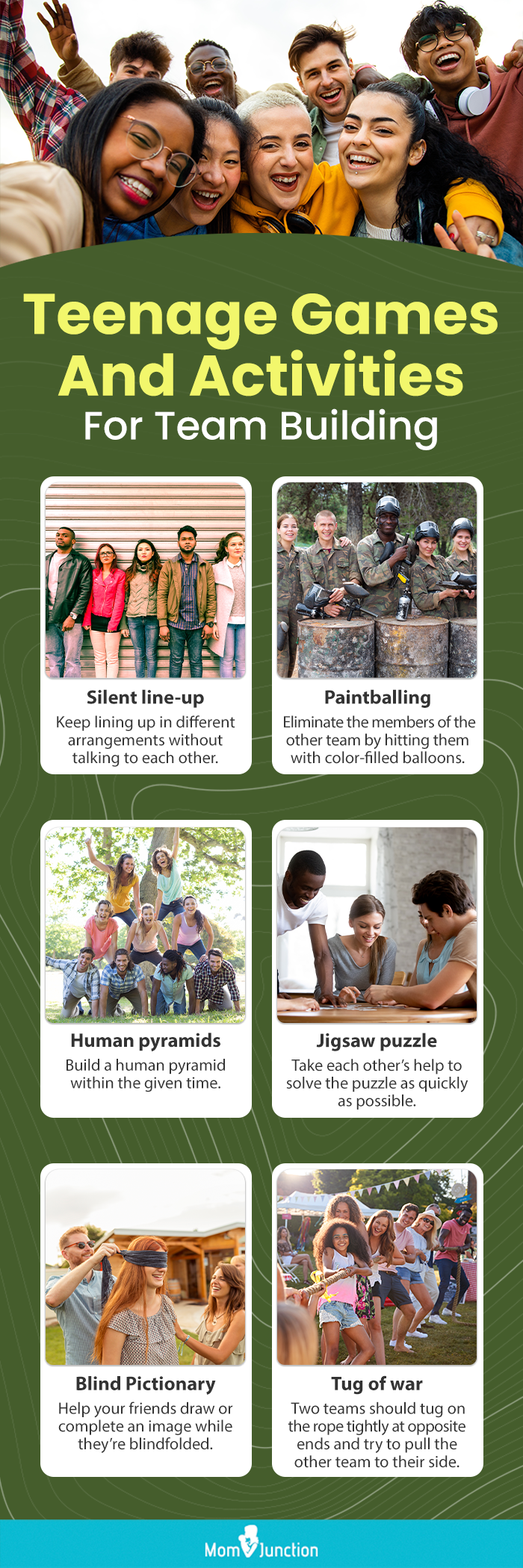
Check out this awesome video for 11 creative team building activities for teens! Unleash the fun together and build relationships with your peers.
Personal Experience: Source
MomJunction articles include first-hand experiences to provide you with better insights through real-life narratives. Here are the sources of personal accounts referenced in this article.
i. FLL teambuilding activitieshttps://youngbotbuilders.blogspot.com/2011/04/fll-teambuilding-activities.html
References
- Why is team building so important?
https://www.canr.msu.edu/news/why_is_team_building_so_important - Team Building Activities for Teenagers; UNICEF Kid Power
https://www.unicefkidpower.org/team-building-activities-for-teenagers/ - The model for a perfect human pyramid (phys.org)
https://phys.org/news/2015-04-human-pyramid.html#:~:text=The%20world%20record%20for%20a%20human - Team-Building Exercises For Teens
https://equinehusbandry.ces.ncsu.edu/wp-content/uploads/2014/03/Team-Building-Exercises-Presentation.pdf?fwd=no - Tug of war at the Summer Olympics – Unionpedia, the concept map
https://en.unionpedia.org/Tug_of_war_at_the_Summer_Olympics - Dissected Maps: The Origins of Jigsaw Puzzles
https://historicgeneva.org/recreation/dissected-maps/
Community Experiences
Join the conversation and become a part of our nurturing community! Share your stories, experiences, and insights to connect with fellow parents.
Read full bio of Dr. Maymunah Yusuf Kadiri
Read full bio of Sagari Gongala
Read full bio of Harshita Makvana
Read full bio of Apoorva K








